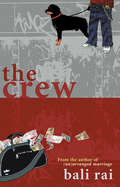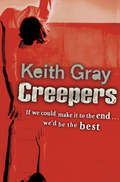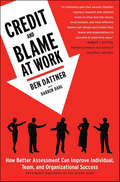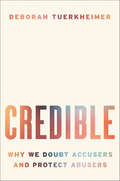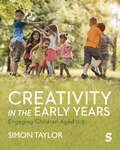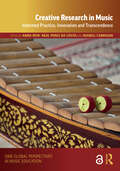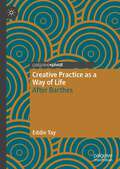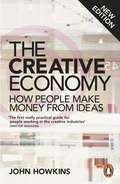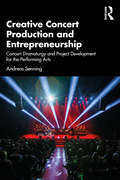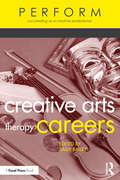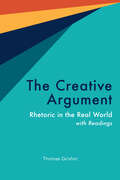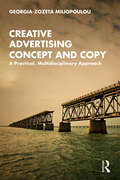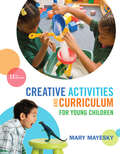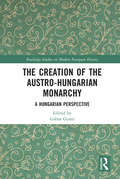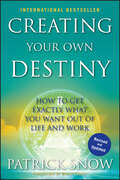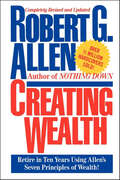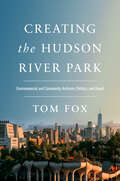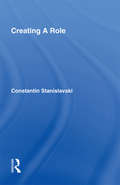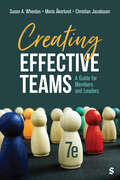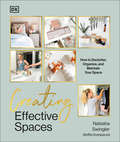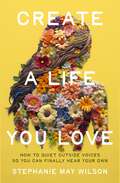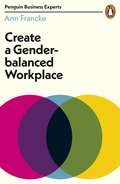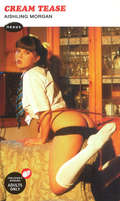- Table View
- List View
The Crew
by Bali RaiMeet Ellie, Jas, Della, Will and Billy. They're tough. They're street-smart. They're the Crew, and they live in what they call the Ghetto - the estates round the city centre where everyone is skint and it's important to stick together. No-one has a go once you're part of a gang. Except, sometimes, the older gangs who can be really dangerous- A new, contemporary novel for today's teenagers from the author of the critically acclaimed (un)arranged marriage.
Creepers
by Keith GrayDerwent Drive was known as the Speed Creep. A continual chain of Dashes into Blind. We'd all heard the story about the Creeper who dropped Blind into a garden, only to discover he was standing in a dog pound. It was also the longest creep; twenty-five houses all in a row, no bends, no kinks. And no Creeper had ever done the lot. But Jamie and I reckoned we could do it. Jamie was the best Creeper around. He was the best Buddie you could have. And he was mine. Ever heard about 'creeping' before? Probably not. Nobody really talks about it. That doesn't mean it doesn't happen. It does. Creeping over back fences all the way down a street without getting caught; without being hurt. It happens more than you might think. It's probably happening somewhere tonight.
Credit and Blame at Work: How Better Assessment Can Improve Individual, Team and Organizational Success
by Ben Dattner Darren DahlPreviously published as The Blame Game, this acclaimed guide by a leading workplace expert offers essential advice about how to succeed at work by avoiding the pitfalls of pervasive credit-grabbing and finger-pointing.Credit and Blame at Work, praised by bestselling management expert Robert Sutton as “a modern management classic; one of the most well-crafted business books I have ever read,” psychologist and workplace consultant Ben Dattner reveals that at the root of the worst problems at work is the skewed allocation of credit and blame. It’s human nature to resort to blaming others, as well as to take more credit for successes than we should. Many managers also foster a “blame or be blamed” culture that can turn a workplace into a smoldering battlefield and upend your career. Individuals are scapegoated, teams fall apart, projects get derailed, and people become disengaged because fear and resentment take hold. But Dattner shows that we can learn to understand the dynamics of this bad behavior so that we can inoculate ourselves against it.In lively prose, Dattner tells a host of true stories from individuals and teams he’s worked with, identifying the eleven personality types who are especially prone to credit and blame problems and introducing simple methods for dealing with each of them. The rich insights and powerful practical advice Dattner offers allow readers to master the vital skills necessary for rising above the temptations of the blame game, defusing the tensions, and achieving greater success.
Credible: Why We Doubt Accusers and Protect Abusers
by Deborah TuerkheimerIn this landmark book, a former prosecutor, legal expert, and leading authority on sexual violence examines why we are primed to disbelieve allegations of sexual abuse—and how we can transform a culture and a legal system structured to dismiss accusers Sexual misconduct accusations spark competing claims: her word against his. How do we decide who is telling the truth? The answer comes down to credibility. But as this eye-opening book reveals, invisible forces warp the credibility judgments of even the well- intentioned among us. We are all shaped by a set of false assumptions and hidden biases embedded in our culture, our legal system, and our psyches. In Credible, Deborah Tuerkheimer provides a much-needed framework to explain how we perceive credibility, why our perceptions are distorted, and why these distortions harm survivors. Social hierarchies and inequalities foster doubt that is commonplace and predictable, resulting in what Tuerkheimer calls the “credibility discount”—our dismissal of claims by certain kinds of speakers—primarily women, and especially those who are more marginalized. The #MeToo movement has exposed how victims have been badly served by a system that is designed not to protect them, but instead to protect the status quo. Credibility lies at the heart of this system. Drawing on case studies, moving first-hand accounts, science, and the law, Tuerkheimer identifies widespread patterns and their causes, analyzes the role of power, and examines the close, reciprocal relationship between culture and law—guiding us toward accurate credibility judgments and equitable treatment of those whose suffering has long been disregarded.#MeToo has touched off a massive reckoning. To achieve lasting progress, we must shift our approach to belief. Credible helps us forge a path forward to ensuring justice for the countless individuals affected by sexual misconduct.
Creativity in the Early Years: Engaging Children Aged 0-5
by Simon TaylorThis book offers an accessible and comprehensive new introduction to the subject and practise of creativity in early years education. Taylor takes a uniquely rights-based and inclusive approach to creativity, providing students with a holistic, internationally-minded overview of creativity and its place both inside and outside the classroom. Sections focus on: Defining creativity and its benefits Different modes of creativity Creativity in a policy and social context Creative pedagogy in practice Creative leadership Each chapter offers questions for critical reflection, illustrative contemporary case studies, and ample suggestions for further reading.
Creativity in the Early Years: Engaging Children Aged 0-5
by Simon TaylorThis book offers an accessible and comprehensive new introduction to the subject and practise of creativity in early years education. Taylor takes a uniquely rights-based and inclusive approach to creativity, providing students with a holistic, internationally-minded overview of creativity and its place both inside and outside the classroom. Sections focus on: Defining creativity and its benefits Different modes of creativity Creativity in a policy and social context Creative pedagogy in practice Creative leadership Each chapter offers questions for critical reflection, illustrative contemporary case studies, and ample suggestions for further reading.
Creative Research in Music: Informed Practice, Innovation and Transcendence (ISME Series in Music Education)
by Anna Reid Costa, Neal Peres Da Jeanell CarriganCreative Research in Music explores what it means to be an artistic researcher in music in the twenty-first century. The book delineates the myriad processes that underpin successful artistic research in music, providing best practice exemplars ranging from Western classical art to local indigenous traditions, and from small to large-scale, multi-media and cross-cultural work formats. Drawing on the richness of creative research work at key institutions in South-East Asia and Australian, this book examines the social, political, historical and cultural driving forces that spur and inspire excellence in creative research to extend and to cross boundaries, to sustain our music industry, to advocate for the importance of music in our world, and to make it clear that music matters.In the chapters, our authors present the ideas of informed practice, innovation and transcendence from diverse international perspectives. Each of these three themes has an introductory section where the theme is explored and the chapters in that section introduced. Taken as a whole, the book discusses how the themes in combination, with reference to the authorial group, are able to transform music pedagogy and performance for our global and complex world.Chapter 9 of this book is freely available as a downloadable Open Access PDF at http://www.taylorfrancis.com under a Creative Commons Attribution-Non Commercial-No Derivatives (CC-BY-NC-ND) 4.0 license.
Creative Practice as a Way of Life: After Barthes (Palgrave Studies in Creativity and Culture)
by Eddie TayThis book combines autoethnographic reflections, poetry, and photography with the aim to bridge the gap between creative practice and scholarly research. Drawing on an innovative combination of different forms of knowledge, creative writing and street photographs are presented as means to reflect on the development of knowledge and self-knowledge through a thought-provoking dialogue with Roland Barthes’ post-structuralist work. What does it mean to be a creative practitioner in a world traversed by values of capitalism and artificial intelligence? What does it mean to teach creative practices in such an environment?The urban landscape of Singapore, with the Jewel Changi mall, the Universal Studios, and Little India in the background, is the stage where the capitalist demands of modern city life grapple with the solitary act of writing poetry and taking photographs through the personal experience of the author. Capitalist realism and depression realism entwine with Barthes' notion of vita nova in a mesmerizing phantasmagoria that drags the reader to the bowels and secret pleasures of the creative process.
The Creative Economy: How People Make Money from Ideas
by John HowkinsCreativity is the fastest growing business in the world.Companies are hungry for people with ideas - and more and more of us want to make, buy, sell and share creative products. But how do you turn creativity into money? In this newly rewritten edition of his acclaimed book, leading creative expert John Howkins shows what creativity is, how it thrives and how it is changing in the digital age. His key rules for success include:Invent yourself. Be unique.Own your ideas. Understand copyright, patents and IP laws. Treat the virtual as real, and vice versa.Learn endlessly: borrow, reinvent and recycle.Know when to break the rules.Whether in film or fashion, software or stories, by turning ideas into assets anyone can make creativity pay.
Creative Concert Production and Entrepreneurship: Concert Dramaturgy and Project Development for the Performing Arts
by Andreas SonningCreative Concert Production and Entrepreneurship: Concert Dramaturgy and Project Development for the Performing Arts offers a conceptual and applied introduction to the musical and dramaturgical challenges involved in developing and producing concerts. Drawing from over three decades of real-world experience and a range of international case studies, the author explores new models for cooperation between artists, cultural institutions, governments, and businesses, arguing for the importance of rooting the concert production process in artistic and ethical values. The book presents essential knowledge and techniques to meet the demand for music and stage performances across genres, arenas, formats, and distribution channels. Relevant to a wide range of students and professionals in music and the performing arts, Creative Concert Production and Entrepreneurship marries theory with practice, providing a framework for readers to develop the creative entrepreneurial practices essential for success in today’s music industry.
Creative Arts Therapy Careers: Succeeding as a Creative Professional (ISSN)
by Sally BaileyCreative Arts Therapy Careers is a collection of essays written by and interviews with registered drama therapists, dance/movement therapists, music therapists, art therapists, poetry therapists, and expressive arts therapists.The book sheds light on the fascinating yet little-known field of the creative arts therapies – psychotherapy approaches which allow clients to use creativity and artistic expression to explore their lives, solve their problems, make meaning, and heal from their traumas. Featuring stories of educators in each of the six fields and at different stages of their career, it outlines the steps one needs to take in order to find training in one of the creative arts therapies and explores the healing aspects of the arts, where creative arts therapists work, who they work with, and how they use the arts in therapy. Contributors to this book provide a wealth of practical information, including ways to find opportunities to work with at-risk populations in order to gain experience with the arts as healing tools; choosing the right graduate school for further study; the difference between registration, certification, and licensure; and the differences between a career in a medical, mental health, educational, correctional, or service institution.This book illuminates creative arts therapy career possibilities for undergraduate and graduate students studying acting, directing, playwriting, creative writing, visual arts, theatre design, dance, and music. It is also an excellent resource for instructors offering a course to prepare arts students of all kinds for the professional world.
The Creative Argument: Rhetoric in the Real World, with Readings
by Thomas GirshinThe Creative Argument sets itself apart from its competitors by presenting a series of compelling works of literary nonfiction that challenge what students think they know about arguments. Each chapter begins with an engaging argument from a work of nonfiction, followed by an in-depth yet accessible analysis of a key aspect of argumentation. Suitable for both courses in argument and first-year writing, the principles and strategies outlined in the text help students become more creative and critical as rhetoricians, both inside the classroom and out.
Creative Advertising Concept and Copy: A Practical, Multidisciplinary Approach
by Georgia-Zozeta MiliopoulouConsidering perspectives on creative advertising through a unique media and communications lens, this book encompasses both the theory and practical tools needed to approach and understand creativity in advertising with an original eye.Drawing from diverse subject areas including Social Anthropology, Narrative Theory, Consumer Psychology, Semiotics and Cultural Studies, Creative Advertising Concept and Copy provides a solid grounding in advertising education away from the traditional business and marketing literature. Notwithstanding the need for independent inspiration and originality, the author guides readers through the entire process of campaign planning, moving from strategy to creative idea to finished piece whilst employing concepts and principles relevant to ‘design thinking’. Taking into account ethics and regulations, the use of text and images, and storytelling across radio, TV and video platforms, readers will come to a holistic understanding of what advertising can (and cannot) do, and how to achieve the best results.Written for students involved in creative advertising as an area of academic research and professional practice, this book will also be of interest to early-career advertising professionals seeking a fresh perspective on their work.
Creative Activities and Curriculum for Young Children
by Mary MayeskyCREATIVE ACTIVITIES AND CURRICULUM FOR YOUNG CHILDREN, 11th Edition, is filled with fun, creative, and easy-to implement activities for young children. You'll be encouraged to exercise your own creativity as well as learn how to help young children do the same. Hundreds of activities, up-to-date research, recipes, finger plays, information on how to select children's books, and more make this book an invaluable resource for you and others planning to work creatively with children across the curriculum. This is a book you'll want to use throughout your professional career.
The Creation of the Austro-Hungarian Monarchy: A Hungarian Perspective (Routledge Studies in Modern European History)
by Gábor GyániRecent collection of essays discusses the historical event and the multifarious consequences of the 1867 Compromise (Ausgleich, Settlement), conducted between the Habsburg monarch, Francis Joseph and the Hungarian political ruling class. The whole story has usually been narrated from a plainly Cisleithanian viewpoint. The present volume, the product of Hungarian historians, gives an insight into both the domestic and the international historical discourses about the Dual Monarchy. It also reveals the process of how the 1867 Compromise was conducted, and touches upon several of the key issues brought about by establishing a constitutional dual state in place of the absolutist Habsburg Monarchy. The emphasis is laid not on describing and explaining the path leading to the final and "inevitable" break-up of the Dual Monarchy, but on what actually held it together for half a century. The local outcomes of self-maintaining mechanisms were no less obvious in the Hungarian part of the Dual Monarchy, despite the many manifestations of an overt adversity toward it. The Creation of the Austro-Hungarian Monarchy will appeal to historians dealing especially with 19th-century European history, and is also essential reading for university students.
Creating Your Own Destiny: How to Get Exactly What You Want Out of Life and Work
by Patrick SnowA motivational speaker and entrepreneur presents the ultimate ten-step road map for personal and professional success! This book is for anyone who wants more out of life. Most people want more time, money, freedom, while other seek better health, deeper love, and more sustainable happiness in life. Creating Your Own Destiny shows you how to get all these things through a simple ten-step step success road map. This book not only helps you soul-search for your true passions, but also provides simple strategies that will help you get what you ultimately what out of life. You will learn how to: -Visualize your desired future and make it your reality -Attain all your dreams while keeping family top priority -Create a winning game plan that fulfills your passions -Build wealth through home-based business ownership -Find solutions for dealing with fear and failure -Gain more time, money, freedom, health, love, happiness -Apply the ultimate success secret in life -Secure personal freedom when you create your own destiny
Creating Wealth: Retire in Ten Years Using Allen's Seven Principles of Wealth
by Robert G. AllenPopular speaker, multimillionaire, and author of the all-time bestselling real-estate book Nothing Down, Robert G. Allen knows how to bring you financial success. With his seminars sweeping the nation, Allen is at the cutting edge of strategic wealth creation now more than ever. And in this completely revised edition of his classic bestseller Creating Wealth Allen gives you the basic principles that you need to stop thinking poor and start growing rich. Moving beyond just real estate, Allen goes straight to the core of people's inner motivations and beliefs about money to give you all the fundamentals of wealth creation. By developing a wealthy mind-set, anyone can take off into financial self-reliance -- and Allen shows you how. He explains the ways in which most of us have been programmed to think that only saving is good and debt and risk are bad, so that in our efforts to gain security, we cheat ourselves out of getting rich. The key to changing that mind-set is Allen's unique integration of real estate with other wealth-generating investments. In his trademark, easy-to-understand style Allen spells out all his practical applications and shows you how to: Take advantage of recent tax lawsUse leverage to multiply holdings while minimizing risksBenefit from high-yield discount mortgagesAcquire long-term profits in gold and silver coinsSet up corporations and trusts to protect assetsFind the highest rate of return with the greatest liquidity As Robert Allen has proved in his own life -- becoming a multimillionaire well before he was thirty-five -- it doesn't matter how much or how little money you have when you start as long as you understand the right principles -- timeless principles that can make you a fortune.
Creating the Hudson River Park: Environmental and Community Activism, Politics, and Greed
by Tom FoxThe 4-mile-long, 550-acre Hudson River Park is nearing completion and is the largest park built in Manhattan since Central Park opened more than 150 years ago. It has transformed a derelict waterfront, protected the Hudson River estuary, preserved commercial maritime activities, created new recreational opportunities for millions of New Yorkers, enhanced tourism, stimulated redevelopment in adjacent neighborhoods, and set a precedent for waterfront redevelopment. The Park attracts seventeen million visitors annually. Creating the Hudson River Park is a first-person story of how this park came to be. Working together over three decades, community groups, civic and environmental organizations, labor, the real estate and business community, government agencies, and elected officials won a historic victory for environmental preservation, the use and enjoyment of the Hudson River, and urban redevelopment. However, the park is also the embodiment of a troubling trend toward the commercialization of America’s public parks. After the defeat of the $2.4 billion Westway plan to fill 234 acres of the Hudson in 1985, the stage was set for the revitalization of Manhattan’s West Side waterfront. Between 1986 and 1998 the process focused on the basics like designing an appropriate roadway, removing noncompliant municipal and commercial activities from the waterfront, implementing temporary improvements, developing the Park’s first revenue-producing commercial area at Chelsea Piers, completing the public planning and environmental review processes, and negotiating the 1998 Hudson River Park Act that officially created the Park. From 1999 to 2009 planning and construction were funded with public money and focused on creating active and passive recreation opportunities on the Tribeca, Greenwich Village, Chelsea, and Hell’s Kitchen waterfronts. However, initial recommendations to secure long term financial support for the Park from the increase in adjacent real estate values that resulted from the Park’s creation were ignored. City and state politicians had other priorities and public funding for the Park dwindled. The recent phase of the project, from 2010 to 2021, focused on “development” both in and adjacent to the Park. Changes in leadership, and new challenges provide an opportunity to return to a transparent public planning process and complete the redevelopment of the waterfront for the remainder of the 21st-century. Fox’s first-person perspective helps to document the history of the Hudson River Park, recognizes those who made it happen and those who made it difficult, and provides lessons that may help private citizens and public servants expand and protect the public parks and natural systems that are so critical to urban well-being.
Creating A Role
by Constantin StanislavskiCreating a Roleis the culmination of Stanislavski's masterful trilogy on the art of acting. An Actor Preparesfocused on the inner training of an actor's imagination. Building a Characterdetailed how the actor's body and voice could be tuned for the great roles he might fill. This third volume examines the development of a character from the viewpoint of three widely contrasting plays: Griboyedov's Woe from Wit, Shakespeare's Othello, and Gogol's The Inspector General. Building on the first two books, Stanislavski demonstrates how a fully realized character is born in three stages: "studying it; establishing the life of the role; putting it into physical form."Tracing the actor's process from the first reading to production, he explores how to approach roles from inside and outside simultaneously. He shows how to recount the story in actor's terms, how to create an inner life that will give substance to the author's words, and how to search into one's own experiences to connect with the character's situation. Finally, he speaks of the physical expression of the character in gestures, sounds, intonation, and speech. Throughout, a picture of a real artist at work emerges, sometimes failing, but always seeking truthful answers.
Creating Effective Teams: A Guide for Members and Leaders
by Susan A. Wheelan Maria Åkerlund Christian JacobssonCreating Effective Teams: A Guide for Members and Leaders provides expert-backed strategies for cultivating top-performing teams across public and private industries. The updated Seventh Edition offers cutting-edge methodologies tailored to modern work dynamics, supporting maximum productivity and collaboration.
Creating Effective Teams: A Guide for Members and Leaders
by Susan A. Wheelan Maria Åkerlund Christian JacobssonCreating Effective Teams: A Guide for Members and Leaders provides expert-backed strategies for cultivating top-performing teams across public and private industries. The updated Seventh Edition offers cutting-edge methodologies tailored to modern work dynamics, supporting maximum productivity and collaboration.
Creating Effective Spaces: Declutter, Organize and Maintain Your Space
by Natasha SwinglerAn effective space is one that works for you, liberating you to live the life you want. Natasha Swingler’s decluttering and organization solutions save time, space, and look amazing!Natasha takes you around the home and shares her hacks from the kitchen to the bedroom via the office and hallway. Never again will you need to step over your "floordrobe", rifle through the shoe rack, or spend ten minutes searching for keys.Applying Natasha’s "house rules" to every room, drawer, and cupboard, you’ll learn to ditch the complex systems, keep things where you use them, and set all-important boundaries throughout your home. Taking the questionnaire at the start of the book will reveal the priorities for your living space. Then, by implementing daily routines, simple systems, and practical processes tailored to your needs, you will create an ideal stress-free environment that looks good, too.With beautiful photography throughout, and step-by-step diagrams of folds for everything from towels and T-shirts to gift-wrap, Natasha’s system for creating a serene home can be applied to any space, large or small.
Create a Life You Love: How to Quiet Outside Voices So You Can Finally Hear Your Own
by Stephanie May WilsonAs women, we're often told that we're entitled or unrealistic when we want to create a life we love. We start hearing this message from a very early age, and by the time we're old enough to know what we want, we've also been taught to doubt our instincts and to see selfishness in all our longings.This book is the antidote to those voices. . .and the way forward.Writer, speaker, and podcaster Stephanie May Wilson has helped thousands of women shrug off the pressure of what they think their lives are supposed to look like and take on the next big decision or life transition with intentionality and confidence.Create a Life You Love is a warm, passionate guide on how you can rediscover your own authority and build a life you're finally excited to live. You'll learn how to:Define yourself on your own terms by setting aside societal pressures that tell you who you're supposed to be.Feel empowered to make your next big decisions with confidence and clarity.Build security and peace in both who you are and the season you're in.Through stories, exercises, and hard-won wisdom, Create a Life You Love will help you untangle your own expectations from the expectations of others and get inspired to at last pursue a life that you're excited to wake up to each day.
Create a Gender-Balanced Workplace (Penguin Business Experts Series)
by Ann FranckeEquality at work expert Ann Francke reveals how to understand and tackle the damaging consequences of gender imbalance in the workplaceGender balance is first and foremost a business issue. McKinsey estimates we could add 28 trillion to global GDP if we achieved gender equality everywhere - that is more than the GDPs of the US and China combined. But it's so much more than that. Gender balance is one of the best levers we can pull to build better managers and leaders at every level, improve team performance and create better cultures where everyone can thrive.In the Penguin Experts: Create a Gender-Balanced Workplace, Ann Francke, the CEO of the Chartered Management Institute (CMI), introduces her solution to combating the problems at the heart of the continued imbalance and offers clear, actionable strategies for making a positive change in your organisation.
Cream Tease
by Aishling MorganDevon,1939. Recalcitrant RAF officer Alexander Gorringe dreams of a cushy wartime billet. Together with his vindictive and perverted uncle, Reginald Thann, he devises a plan to have just that. Girls in uniform, military discipline and a very bizarre dairy farm feature in the latest story from the author of the Cream series. Titles in this series include Devon Cream and Peaches and Cream.
